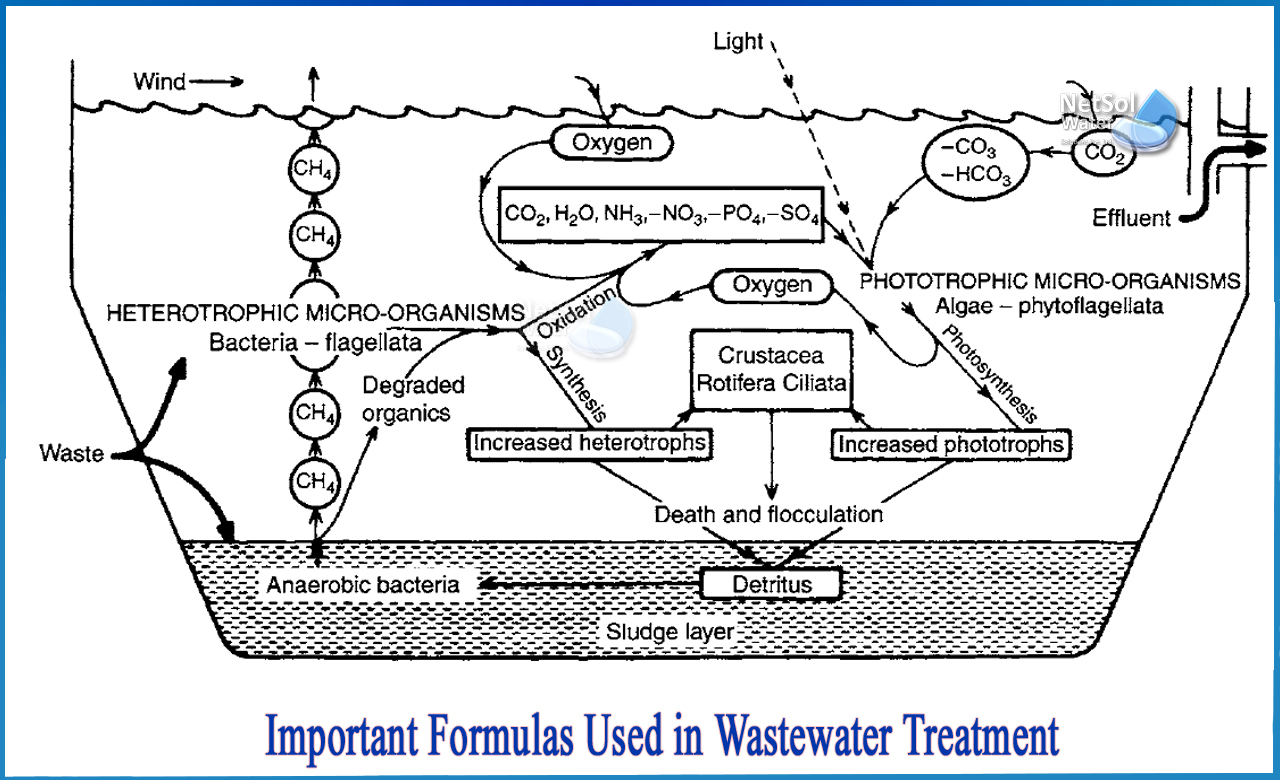Which is Important formulas used in Wastewater Treatment?
The main purpose of wastewater treatment is generally to enable the disposal of human and industrial wastewater without endangering human health or unduly damaging the natural environment. Sewage irrigation is both disposal and recovery, and is actually an effective form of sewage disposal (like slow soil treatment).
However, raw urban sewage usually requires some treatment before it can be used for agriculture, landscape irrigation, or aquaculture. The quality of treated wastewater used in agriculture has a significant impact on the operation and performance of sewage treatment plants or aquaculture plants. For irrigation, the quality of wastewater required depends on the plant or soil to be irrigated, the soil conditions, and the wastewater distribution system used.
Below are some of the formulas used in waste water treatment:
1. Mean Cell ResidenceTime:
The mean cell residence time or MCRT is the time that solids or bacteria are maintained in the activated sludge system. It is also called as solids retention time (SRT). To calculate the MCRT of the activated sludge process to the amount or pound of solids or suspended solids in Activated sludge system and amount or pound of suspended matter that leaves the activated sludge system:

or

2. Food to mass ratio:
Food to mass ratio is the ratio of food entering in the activated sludgeprocess versus the amount of micro-organisms present in the tank.

Or

3. Sludge volume index:
The typical sludge volume index (SVI) varies between 50-150 mg/l

4. Solids loading rate for secondary clarifiers:
Surface load is a hydraulic load factor and is expressed as a flow rate per surface. This factor is also known as the "surface loading rate. Typical surface load values ??for primary purification equipment are 600-1,000 gallons per square foot per day.

5. COD:
COD = ((A- B)* M *8000) / sample volume in ml.
Chemical oxygen demand is the amount of oxygen required to oxidize organic matter present in water. The chemical oxygen demand test is used to determine the degree of oxidation that occurs and the amount of organic matter in the water sample. The chemical oxygen demand test is also used to determine the amount of inorganic chemicals in a sample.
6. BOD:
BOD= ((Initial D.O. – Final DO)* 300 ml) / Sample Volume (mL)
A typical lake or stream contains a small amount of oxygen in the form of dissolved oxygen (DO). Dissolved oxygen is an important part of mineral water that maintains the aesthetic quality of aquatic organisms and streams and lakes. Decomposition of organic matter in water is measured as biochemical oxygen demand. However, environmental pollution and other anthropogenic factors can reduce the amount of dissolved oxygen in water bodies.
Biochemical Oxygen Demand is basically a measure of the amount of oxygen required to remove organic waste from water during the decomposition process by aerobic bacteria. To comply with the BOD limit, commercial and manufacturing industries must implement a wastewater pre-treatment or disposal program. The industry that drains wastewater into municipal sewers and waterways faces strict regulations on BOD content.
7.Return sludge rate
MGD = Settled solids, mL x (Flow, MGD)
(1000 mL - Settled solids, mL)
Netsol Water is Greater Noida-based leading water & wastewater treatment plant manufacturer. We are industry's most demanding company based on client review and work quality. We are known as best commercial RO plant manufacturers, industrial RO plant manufacturer, sewage treatment plant manufacturer, Water Softener Plant Manufacturers and effluent treatment plant manufacturers. Apart from this 24x7 customer support is our USP. Call on +91-9650608473, or write us at enquiry@netsolwater.com for any support, inquiry or product-purchase related query.



